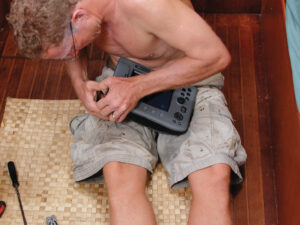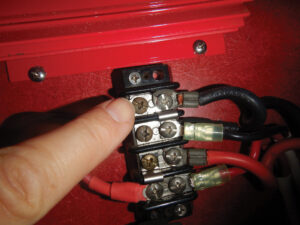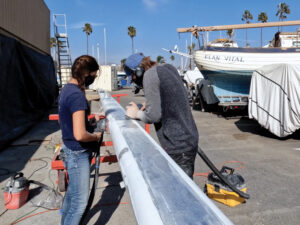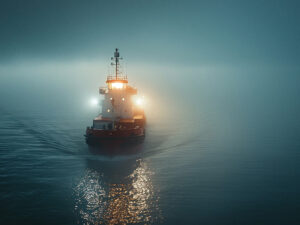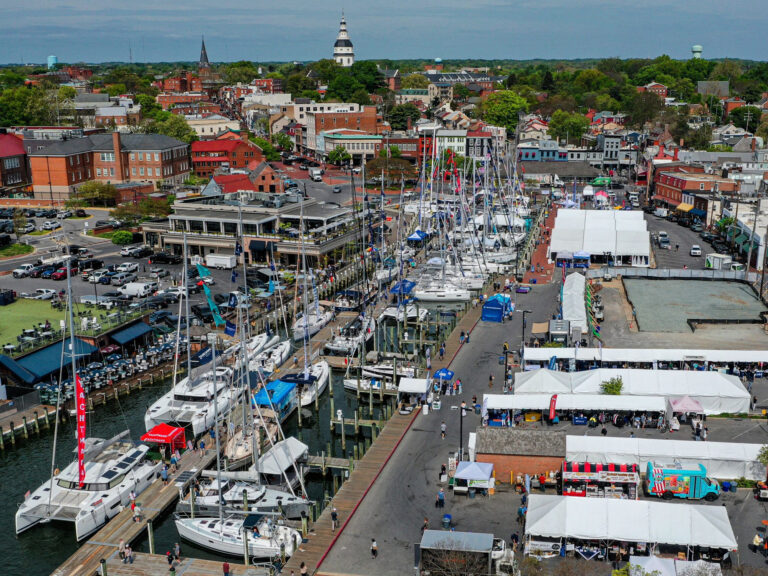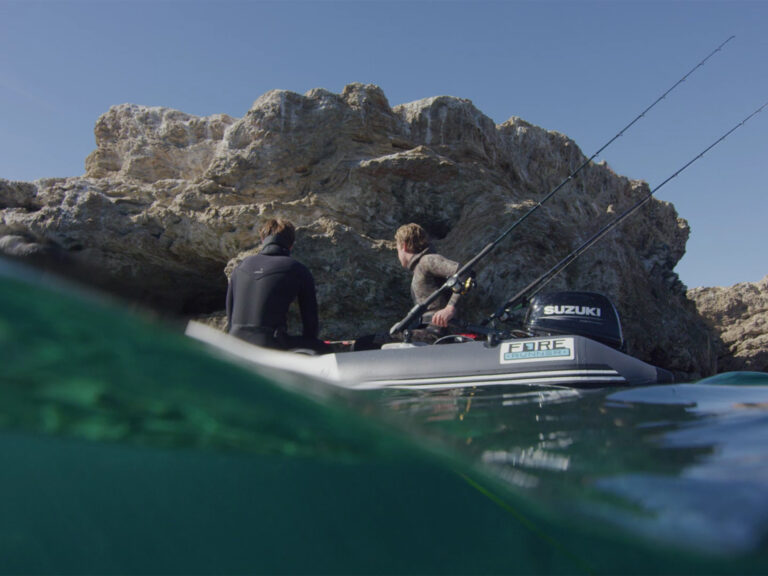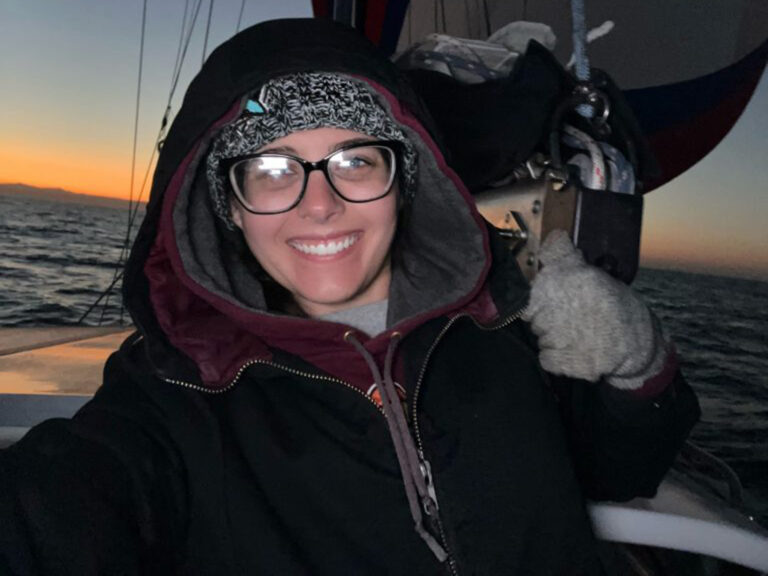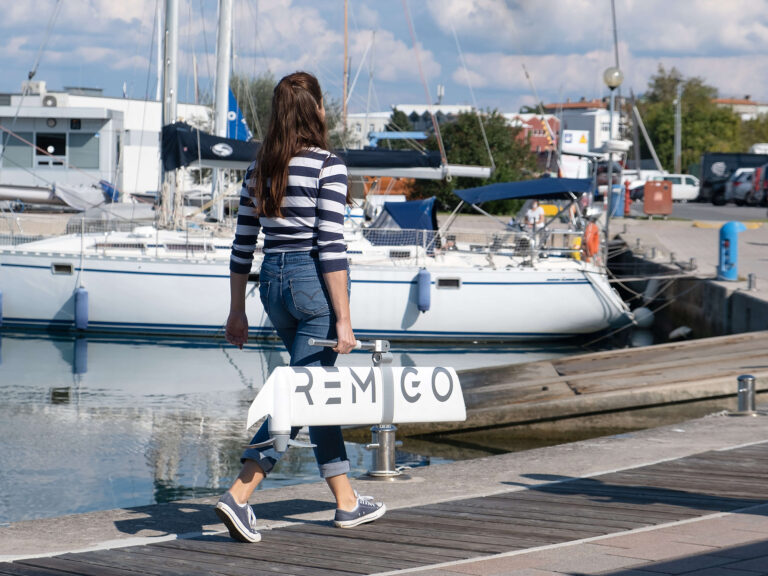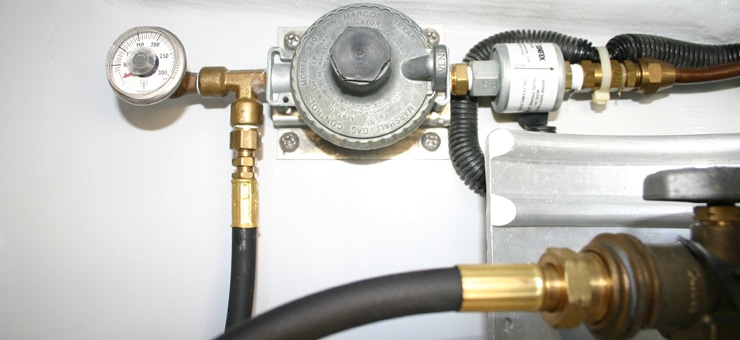
Cooking Fuel
In everyday use, there are two basic principles for conserving propane: Don’t heat larger quantities than you need to, and don’t heat things longer than they need to be heated. If you know you’re running low on fuel, you can then embrace a third principle: Choose the most energy-efficient menu and cooking method.
Here are my top 12 ways to conserve cooking fuel. While propane seems to be the most common cooking fuel on cruising boats, these tips work equally well for kerosene, alcohol, white gas, and even electricity.
1. Cover pans: Covering pans keeps the heat in the pan, cooking the food. I’ve seen estimates that covered pans consume less than half the energy of uncovered ones, so this is a huge savings both in the amount of propane used and the heat released in the cabin on a hot day. If a pan doesn’t have a lid, use a piece of aluminum foil or a heat-proof plate, such as those made by Corelle.
2. Measure water: Not heating more water than you need also saves propane. If I’m making a recipe that calls for 1 cup of boiling water, I measure 1 cup into the teakettle and boil only that amount.
3. Use a whistling teakettle: It’s easy to put a pan of water on to boil and then get sidetracked while the water merrily boils away. A whistling teakettle lets you know when the water is ready so you can turn the burner off right away.
4. Use a timer: A timer reminds you to turn the heat down or take things off the fire. Just as with the teakettle, it’s easy to forget something and let it cook longer than intended. For example, if something needs to cook 10 minutes and you let it go 11 minutes, you’ve wasted 10 percent more fuel. I wear a wristwatch with a timer, but I know many cruising sailors don’t like to wear a watch. If that’s you, a timer with a very loud buzzer that can be heard everywhere on the boat—even on deck—is a good option.
- Don’t overheat: It’s a waste of propane to heat something to boiling, only then to have to let it cool down before you can use it. For instance, if you’re reheating soup (not actually cooking it), why bring it all the way to a boil just to let it cool so you can eat it?
6. Use less water: If you’re cooking eggs, pasta, or vegetables, you can often use less water than what the directions call for. Usually, just covering the food gives results that are indistinguishable from using more. And every extra bit of water just takes that much more propane to heat. By using less water, you’re also putting less steam into the boat, a bonus in humid places.
7. Plan ahead: Is it possible to combine the cooking of items for multiple meals? Even if you have to reheat the leftovers, this technique will use less propane than starting from scratch both times. For example, if you’re having rice for dinner and plan to have a rice salad for lunch tomorrow, cook the rice all at once. And in the morning, I boil one kettle of water and make coffee and oatmeal from it, plus start iced tea and yogurt.
8. Keep hot water in a thermos: Related to the previous tip is keeping extra hot water in a good vacuum-seal bottle. A high-quality stainless-steel thermos with thick walls can keep water near boiling for hours. Even if you need it to be freshly boiling later, it will take a lot less propane to raise the temperature if the water starts out hot from the thermos. For even more propane savings, try using a thermos as a slow cooker. You can read how to do this in a CW web extra (cruisingworld.com/1107thermos).
9. Don’t use propane to heat dishwater: Dishes will get clean in cold water, although it may take a little more elbow grease. A few good scrubber pads really help. If you’re cruising in a sunny location, there’s another option: Buy a small SunShower, put it on deck with a gallon or so of water in it, then run the hose through a porthole down to the galley sink. If you’ve never used a SunShower, you may be surprised at how hot the water gets—I’ve come close to scalding myself.
10. Turn the stove off early: Pans retain a lot of heat even after the stove is turned off, particularly when there are lids on them. Pasta and rice can usually be turned off a few minutes before they’re fully ready. Oatmeal (instant or old-fashioned) just needs to be brought to a boil;
it can then be turned off and left to sit, covered, for 5 minutes.
11. Cold brew your tea: You can make sun tea or cold-brewed tea without using any propane. Fill a gallon jug with water and add tea bags with the tags hanging out of the mouth. Screw on the lid. For sun tea, set the bottle in a sunny location for 4 to 6 hours. For cold-brewed tea, put it in the refrigerator for at least 12 hours. When it’s ready, remove the bags.
12. Consider not preheating: Preheating an oven longer than necessary wastes a lot of fuel. Try to time the preheating so the oven is just coming up to temperature when you’re ready to put in the food. And many foods—such as meats and casseroles—don’t need the oven preheated. Baked goods always do, unless the recipe states otherwise. Conserving propane isn’t just environmentally friendly; it also saves money, time, and reduces heat in the boat—and all of these things that can make your time aboard more enjoyable.
Carolyn Shearlock and her husband, Dave, cruised the Golfo de California and the Pacific coast of Central America for six years aboard ¿Que Tal?, their Tayana 37. Carolyn now writes about practical galley tips in her blog, The Boat Galley (theboatgalley.com).

